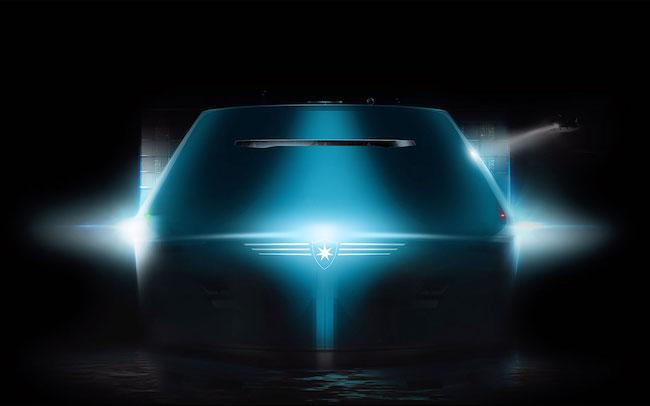
The global shipping company A.P. Moller - Maersk has joined the growing list of top corporations pledging either 100 percent renewable energy or net zero carbon emissions. That's a fairly straightforward task for some companies, but it in the global transportation sector the obstacles seem insurmountable. After all, carbon is the lifeblood of shipping and logistics.
Nevertheless, Maersk is setting its sights on net zero carbon emissions by 2050. That's a long way off, but if the company can produce some quick results out of the gate, it could push the entire industry in a more sustainable direction.
Maersk makes the net zero carbon emissions pledge
Renewable energy and net zero are two complementary but distinct goals. For example, a net zero pledge can simply mean that a company is using offsets to counterbalance its carbon emissions, rather than making operational changes that shrink its carbon footprint.
With that in mind, let's take a closer look at the new net zero announcement.
Maersk is actually looking at a much more ambitious goal than offsets. The company's net zero goal involves something that doesn't exist yet: commercially viable, carbon neutral shipping vessels.
In order for Maersk to achieve its 2050 goal, those vessels have to materialize by 2030. That's because cargo ships generally have a lifespan of 20-25 years. Vessels made during or after 2030 will still be around by 2050. If they are still being built to run on fossil fuels it will be that much harder to reach net zero.
In other words, Maersk is calling for industrywide collaboration on new cutting edge technology, not merely efficiency tweaks on fossil fuel technology.
The company has already invested $1 billion in energy efficiency improvements over the past four years alone, but that is not enough. As explained in a December 4 press release, Maersk is seeking a wholesale movement away from fossil fuels:
As world trade and thereby shipping volumes will continue to grow, efficiency improvements on the current fossil based technology can only keep shipping emissions at current levels but not reduce them significantly or eliminate them.
That seems to leave some wiggle room for on-board carbon capture, but Maersk seems to be focusing its attention on non-fossil fuel sources. Company Chief Operating Officer Søren Toft elaborates:
The only possible way to achieve the so-much-needed decarbonisation in our industry is by fully transforming to new carbon neutral fuels and supply chains.
What about scrubbers and LNG?
There is an interesting backstory to Maersk's insistence on a non-fossil solution. The global shipping industry is facing a new cap on sulfur emissions by 2020. To meet the new standard, some shippers have already invested in scrubbers. Liquid natural gas and other compliant fuels are the two other options.
By insisting on carbon neutral fuels -- and supply chains -- Maersk is essentially saying that an emissions cap doesn't tackle the global warming problem at its source. The company is looking far into the 21st century for permanent solutions. If it can enlist more companies in that endeavor, economies of scale kick in and costs go down.
That's a tall order for the shipping community. Although electric drive is edging into the market for small seacraft, Maersk does not foresee loading battery packs onto its colossal ships. As the company points out, electric trucks have only just barely edged into the logistics market, and they handle loads that are only up to the size of a standard shipping container. Maersk's gigantic cargo ships carry thousands of shipping containers and travel thousands of miles without refueling.
So, what's left? Biofuel is one avenue, though growing fuel crops at scale is a challenge considering the increasing risks and impacts of climate change on arable land. One alternative is to grow marine fuel crops like algae and seaweed. Maersk has already paired with the U.S. Navy on algae biofuel and it could be considering a focus in that direction.
Maersk has also been experimenting with wind power among other alternatives.
Renewable hydrogen could also be on the table. Hydrogen -- produced by "splitting" water with renewable energy -- is already beginning to challenge battery technology in the trucking industry and rail transportation, though its application to larger ships is still untested.
Making carbon neutral ships out of thin air
Though the 2050 goal is challenging, Maersk has a good shot at reaching it. After all, Maersk is the world's largest shipping company. It serves 343 ports in 121 countries and moves 12 million containers every year, so it has the weight to move markets.
Maersk already has its own fleet of more than 50 engineers working on efficiency improvements, partly in response to air quality initiatives at the Port of Los Angeles and elsewhere. If all goes according to plan, 2019 will see that in-house effort expand into an industrywide collaboration:
Research & Development is key to take the industry away from today’s fossil based technology and by setting this ambitious target, Maersk hopes to generate a pull towards researchers, technology developers, investors, cargo owners and legislators that will activate strong industry involvement, co-development, and sponsorship of sustainable solutions that we are yet to see in the maritime industry.
As for leading the industry's march toward net zero, Maersk already has established itself in the pole position. According to the company, over the past 11 years the shipping industry has reduced its carbon emissions by about 37 percent compared to a 2007 baseline. Maersk has beat that average, currently weighing in with a 46 percent reduction.
Photo: via A.P. Moller - Maersk.

Tina writes frequently for TriplePundit and other websites, with a focus on military, government and corporate sustainability, clean tech research and emerging energy technologies. She is a former Deputy Director of Public Affairs of the New York City Department of Environmental Protection, and author of books and articles on recycling and other conservation themes.














